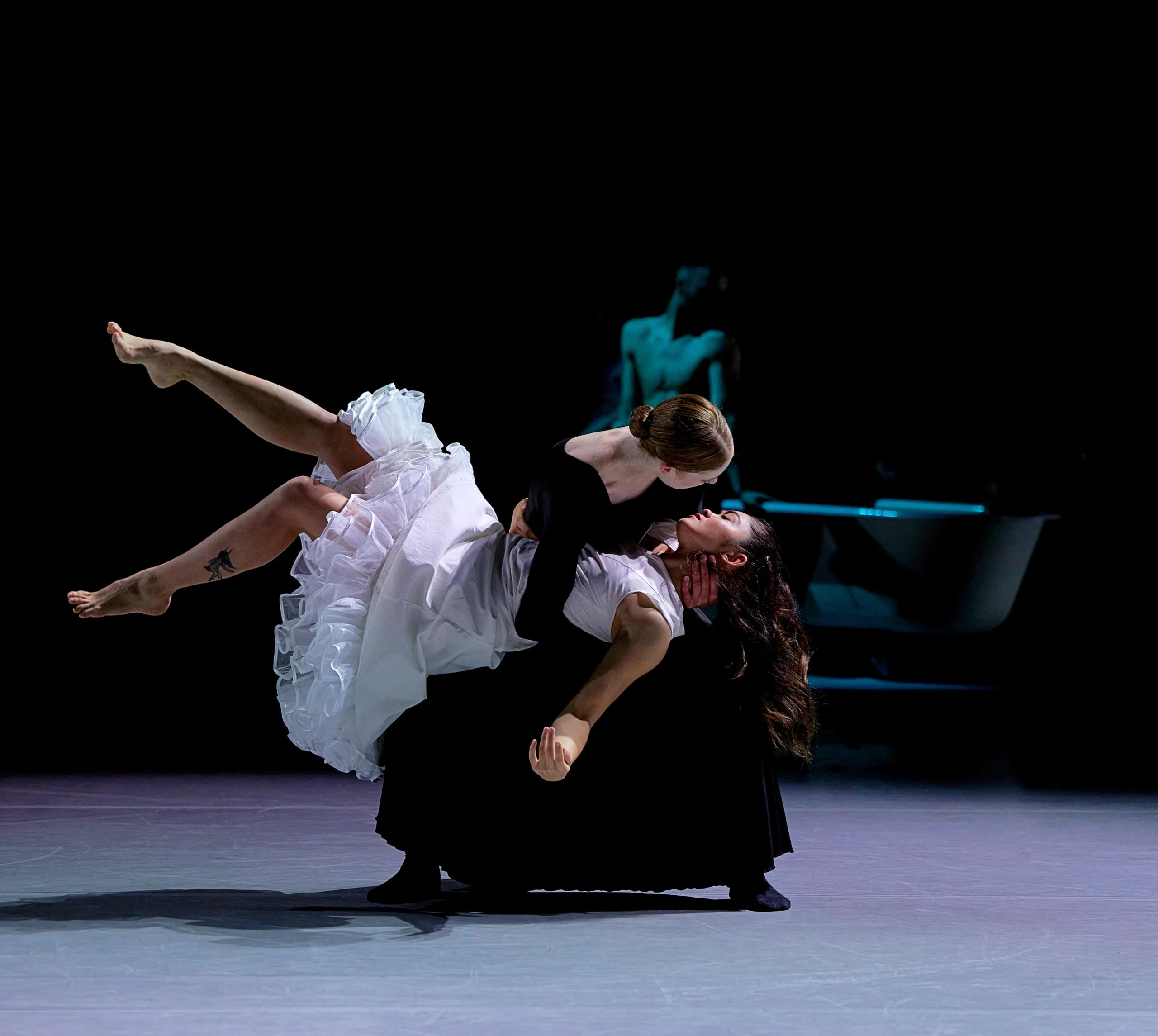Whim W’Him Opens Its Own Dance Center in Seattle
Poring through building codes, applying for permits, and choosing interior finishes isn’t what artistic directors usually do. But Whim W’Him’s Olivier Wevers has been doing that and more while renovating what was formerly a church into the Whim W’Him Contemporary Dance Center in Seattle. With approximately 15,000 square feet, it is one of the largest company-owned centers for contemporary dance in Washington. “I dreamt of a sanctuary for contemporary dance,” says Wevers, “a space with high ceilings and no poles or posts, conventional but practical. And that dream now breathes within these walls.”
Whim W’Him had been looking for studios—roomy, open spaces in a good location—to lease since before the pandemic. But with the costs of state-of-the-art flooring, lighting, and sound systems easily totaling over $140,000, Wevers says, “investing in a space you don’t own seems very perilous.” When the company began looking to buy, a church was an obvious choice. In addition to the architectural benefits, “many churches were on the market after the pandemic,” Wevers says, “and they’re also in family neighborhoods that would attract students” to Whim W’Him’s school.

While the remodel, overseen by architect Owen Richards, kept the space’s lofty ceilings, it required removing some walls and adding others to create a 2,000-square-foot studio and another half that size, as well as office space, a kitchen that doubles as a meeting room, a lobby, and storage areas for costumes and sets. The company participated in planning the half-million-dollar renovation, with the dancers designing their own lounge and changing room. There is also a space on site for them to work with a physical therapist, who is available to them after rehearsals.
The new building also boasts a school for all ages and abilities with contemporary, improvisation, hip hop, repertory, and body therapies among the initial class offerings. “It’s about dance for all ages, all levels,” Wevers says. “Dance for all without a professional hook.” Wevers also plans to offer highly subsidized or free space for local artists, as well as full scholarships for BIPOC dancers to classes and programs.
The center is an impressive accomplishment for a relatively small and relatively new independent contemporary dance company—but maybe not all that surprising given the consistency with which Whim W’Him has made new work and carved out an artistic niche in Seattle. Wevers, who celebrates 25 years as a choreographer this year, enjoyed a huge following as a Pacific Northwest Ballet principal before starting his own company. Since its 2009 founding, Whim W’Him has premiered 88 pieces and commissioned 45 guest choreographers in just 14 seasons, including an entirely virtual 2020–21 season that was successful enough to ensure increases in dancer salaries and benefits at a time when pandemic mitigations left most companies facing significant financial challenges.
Reaching this point “took years of consistent work,” says Wevers, “proving we could maintain our core mission of creativity as well as our ideal of elevating standards of company care for better ethical contemporary dance employment.”
Whim W’Him’s track record has helped its fundraising efforts for the center. To fund the purchase and remodel, the company received a hefty loan from an anonymous donor and a gift of $250,000 from the Jolene McCaw Family Foundation, as well as good financing. A Fall Fete early this season saw 200 people contribute over $250,000. The company has also encouraged smaller gifts through its “Butterfly Effect” capital campaign, through which donors can fund specific line items, like mirror installation, one square foot of flooring, or a single lightbulb (the cheapest option, at $6), “making it fun and affordable for everyone to participate,” says Wevers.
The first event in the completed building happens this month—an open house that will feature free community classes, workshops, performances, lectures, and building tours. Before then, “the company was just camping—the building still looked very much like a church, complete with a choir balcony and dais,” says Wevers. “Now, it’s a world-class center for dance.”




